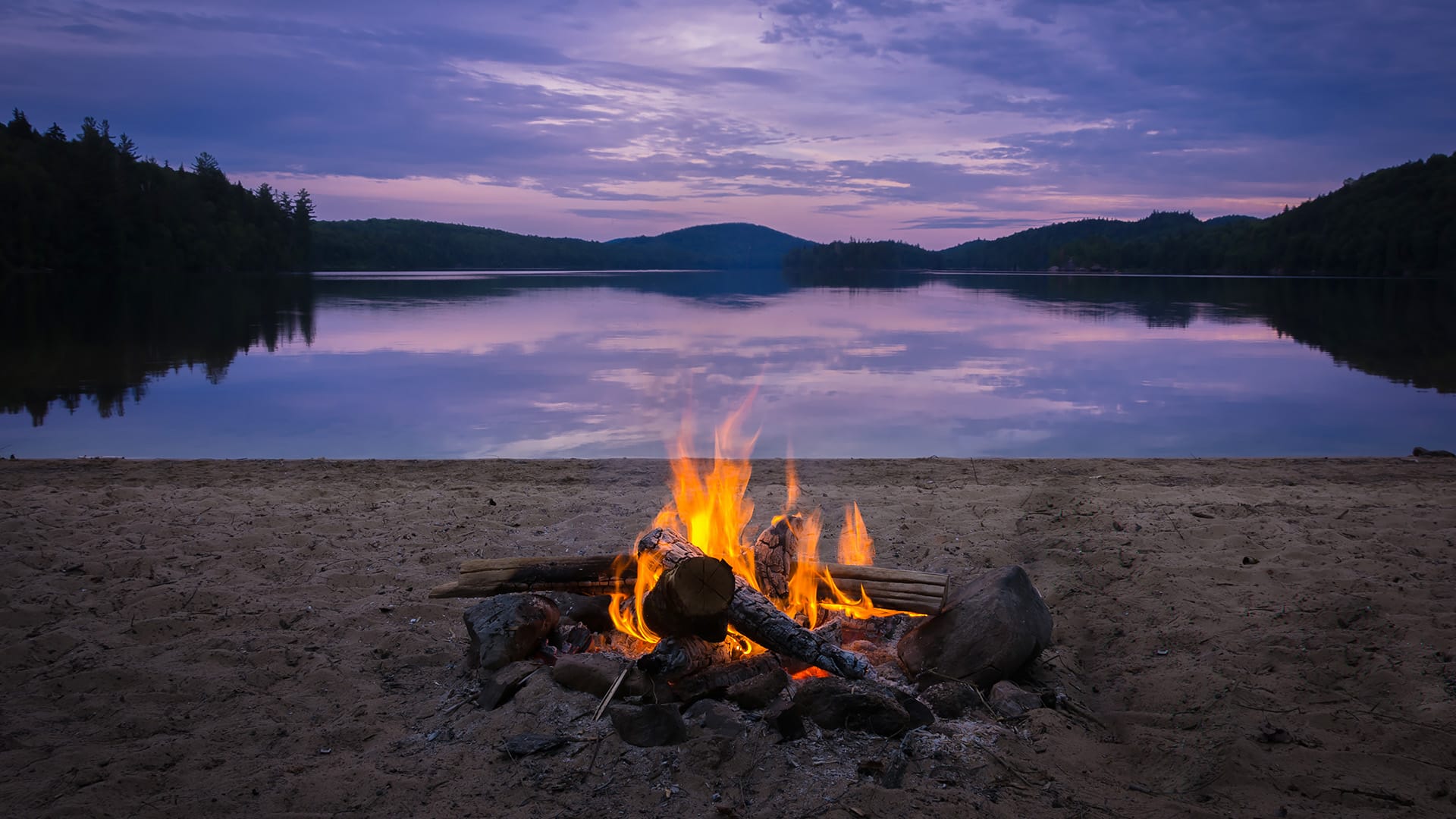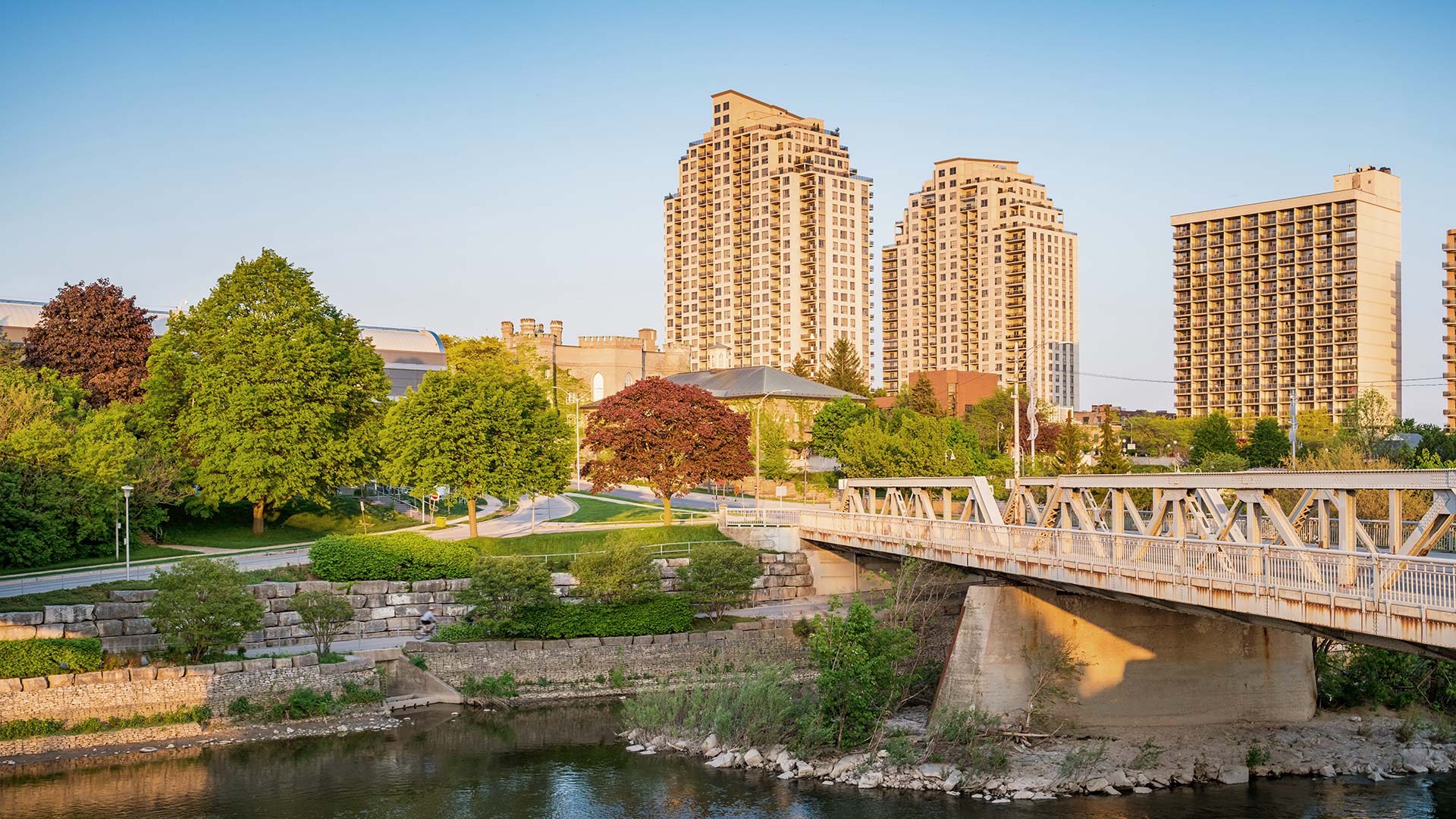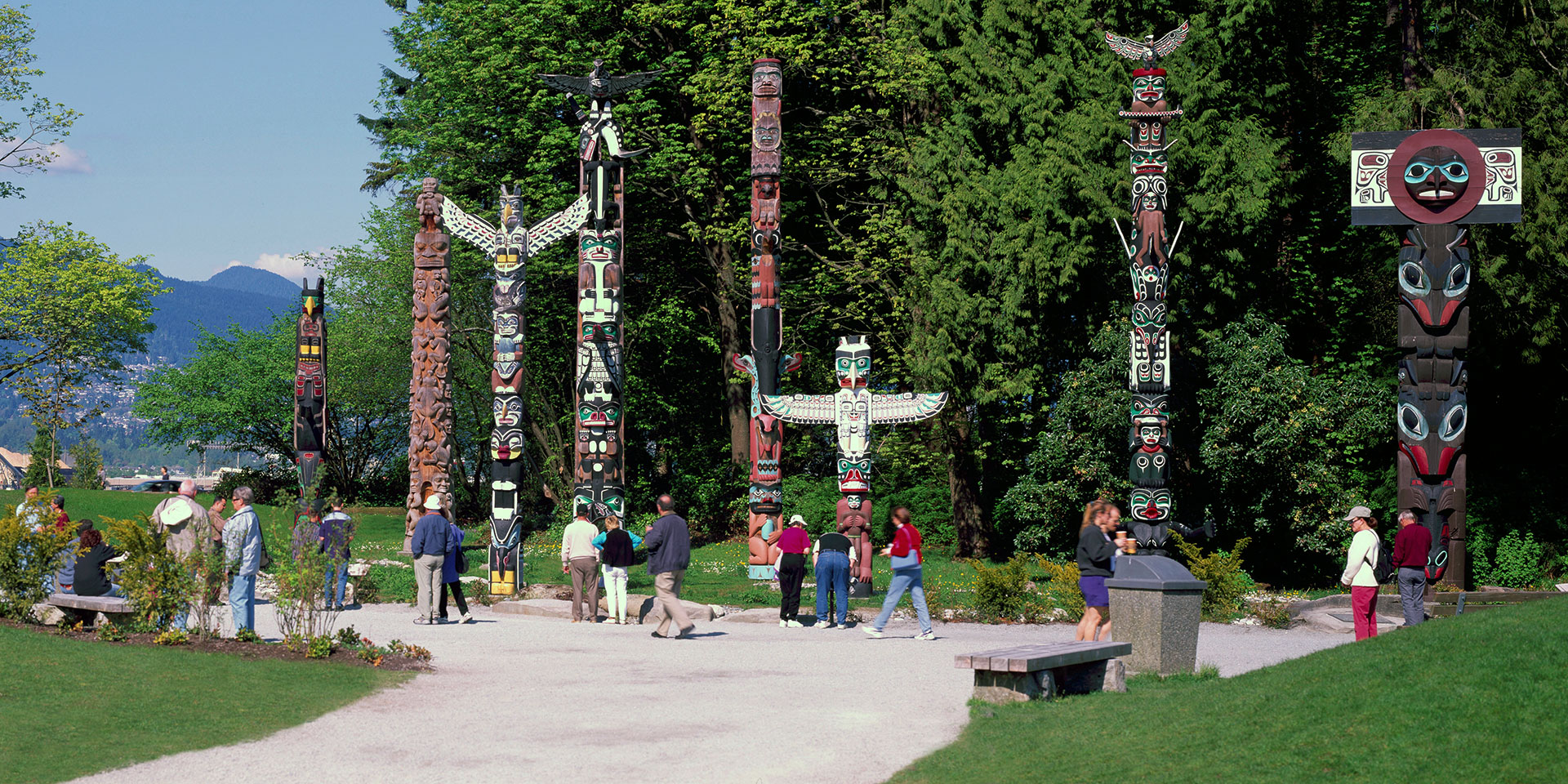
Make a pit stop at Stanley Park to see examples of First Nations totems. (Photo: Alamy)
VancouverWhere to Uncover First Nations Heritage in Vancouver
By Sandra MacGregorMake a pit stop at Stanley Park to see examples of First Nations totems. (Photo: Alamy)
British Columbia is renowned for its breathtaking landscapes, ocean views and wine country. What is less well-known, however, is that it’s also home to more than 30 First Nations groups, making it one of the most diverse collections of First Nations cultures in North America.
One of the best places to discover British Columbia’s — and Canada’s — aboriginal culture is in the vibrant city of Vancouver, which offers visitors unparalleled opportunities to experience First Nation culture. Here are five of our favorite spots.
The Vancouver Airport
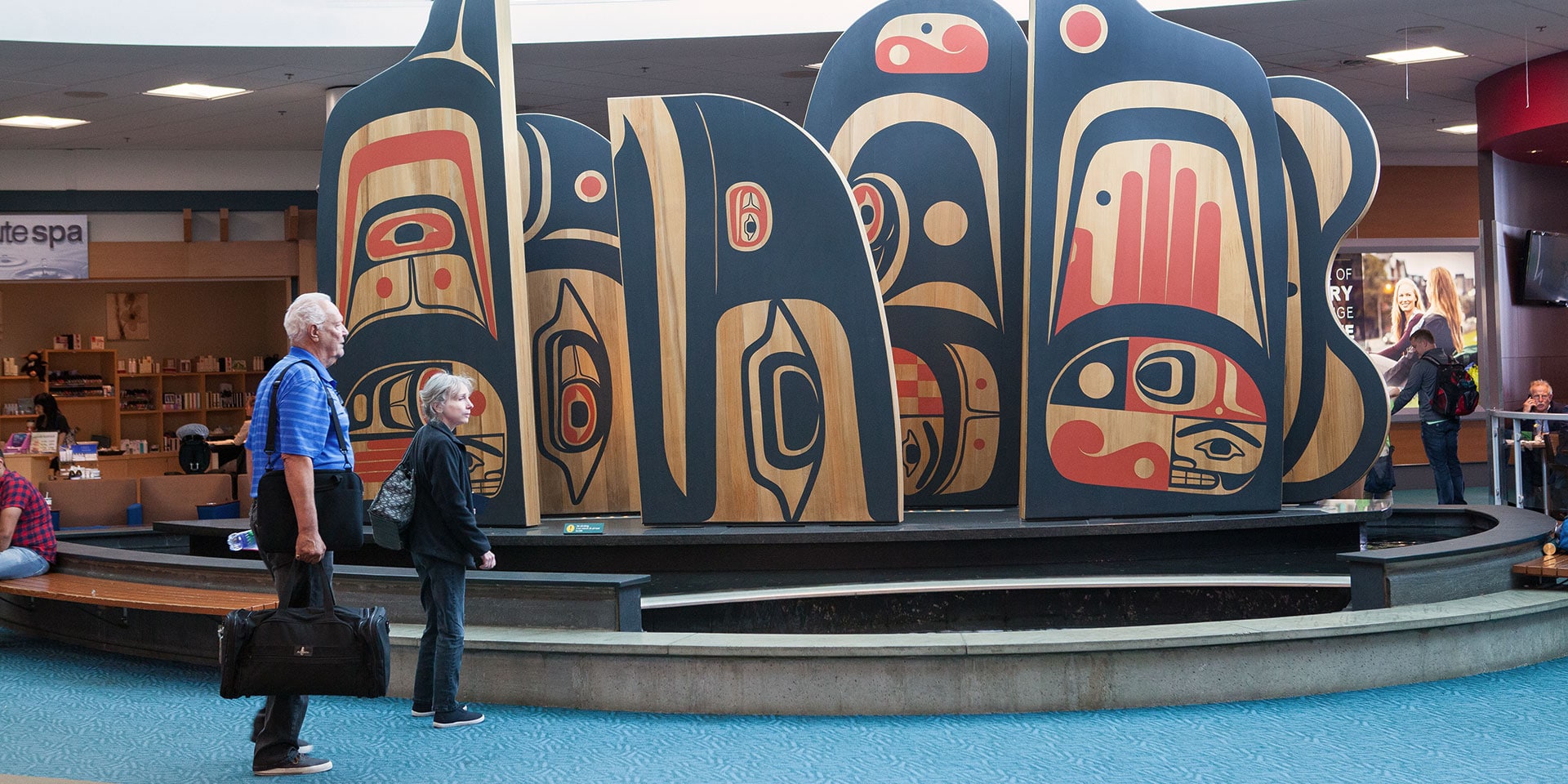
Visitors’ immersion into First Nations’ culture begins at the Vancouver International Airport, which houses some of the finest examples of North American aboriginal art in the world.
While most travelers are in a rush to hurry out of the airport, you’d be well advised to spend time wandering around and taking in some awe-inspiring examples of art.
Arguably, the most famous of all the airport’s artworks is Haida sculptor Bill Reid’s The Spirit of Haida Gwaii: the Jade Canoe. The massive jade canoe (found in the international terminal) holds 13 legendary Haida figures and was even featured on Canada’s 20-dollar bill.
Other highlights worth tracking down: Flight Spindle Whorl by Susan Point. Located in the international terminal, it’s the largest Coast Salish Spindle in the world. Also keep an eye out for Point’s Musqueam Welcome Figures.
Aboriginal Art Galleries
Even if you miss out at the airport, plan to explore indigenous creativity in-depth at numerous art galleries peppered throughout the city. Vancouver has an abundance of well-established galleries that focus on works by indigenous artists and offer pieces at a variety of price points.
Even if you’re not in the market to buy, these galleries encourage browsing and are superb places to see and learn about both traditional and modern artists and art forms. Some of the best include Coastal Peoples Fine Arts Gallery, which highlights Northwest Coast First Nations and Inuit works; Hill’s Native Art, reputed to be North America’s largest Northwest Coast art gallery; and the Inuit Gallery of Vancouver.
Museum of Anthropology at UBC
Among the top museums in the country, Vancouver’s Museum of Anthropology is the ideal place to immerse yourself in indigenous culture. It features more than 500,000 cultural and archeological artifacts from around the world, of which nearly 10,000 are from British Columbia’s First Nations.
The museum offers a one-of-a-kind opportunity to see rare tools, weapons, masks, figurines and more. You’ll also find a collection of both modern and traditional artwork by indigenous artists. The piece that’s not to be missed is another of Bill Reid’s masterpieces, entitled The Raven and the First Men. This striking piece is considered one of Reid’s best works and depicts the Haida myth of how the raven coaxed humans to come out into the world.
Salmon n’ Bannock Bistro
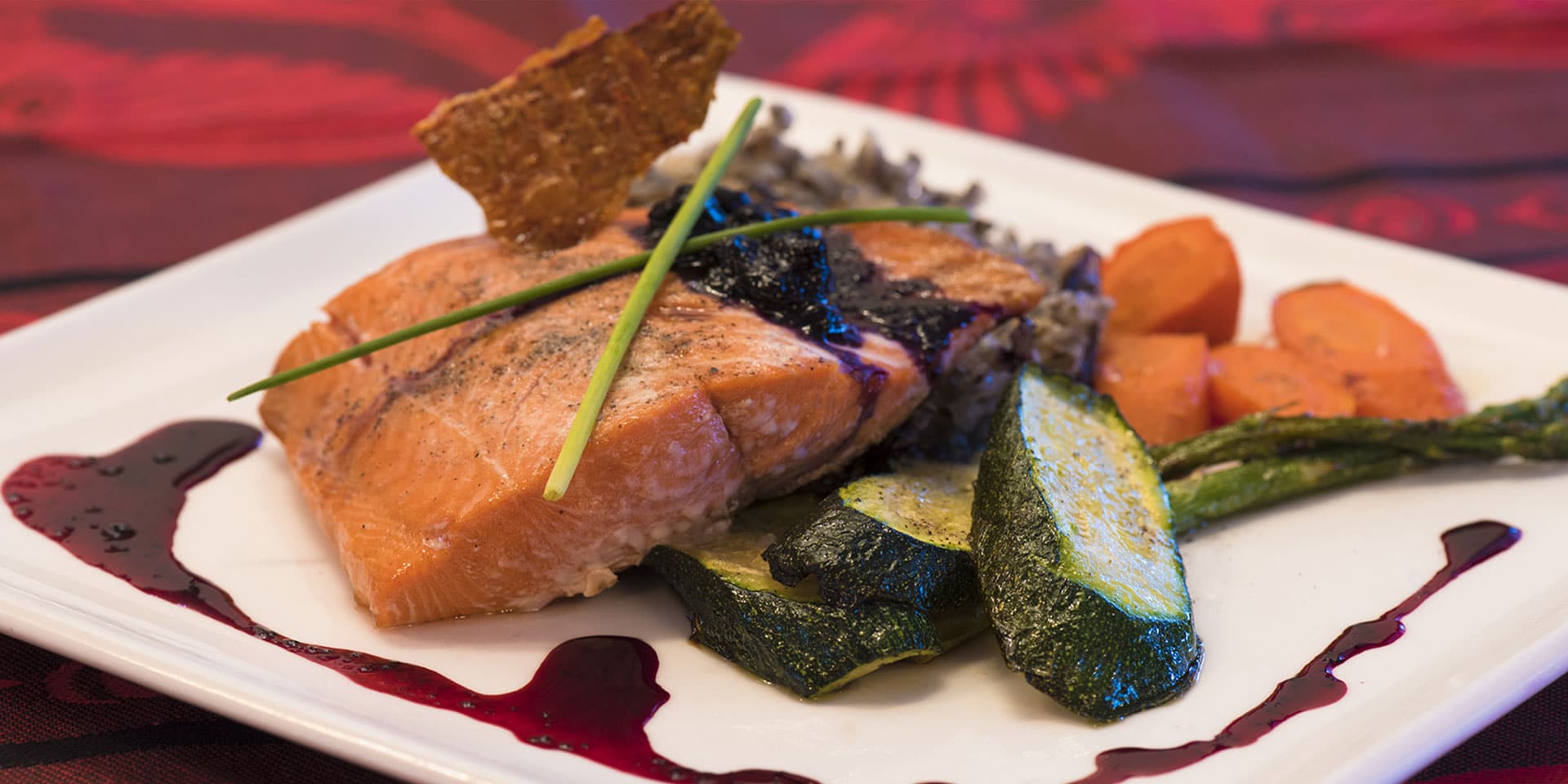
While art may be one of the most recognizable expressions of a people’s identity, food is possibly the most popular manner for those of all ages and interests to discover a community’s culture. Food is a language that uses the taste buds to tell a story of a group’s relationship and history with the land and sea, and nowhere is that more true than at Salmon n’ Bannock Bistro.
The restaurant is named after two of the most important staples for the First Nations peoples: fresh, wild fish and bannock bread. The restaurant’s menu emphasizes fresh seafood, organic vegetables and free-range game meat, including bison, boar and elk. It’s the only First Nations restaurant in the city, so you’d be well-advised to make a reservation to ensure you don’t miss out.
Totem Poles at Stanley Park
The nine totem poles at Brockton Point in Vancouver’s beloved Stanley Park are consistently ranked as one of the top tourist attractions in the entire province of British Columbia. Used for a variety of purposes, such as immortalizing a special event or recording a tribe’s history, few items evoke the mystery and rich history of Northwest Coast aboriginals as much as the iconic totem poles.
The Vancouver Park Board has been collecting the totems since the 1920s, and they come mainly from First Nations peoples from Alert Bay, the Queen Charlotte Islands and Rivers Inlet. The ninth and most recent totem was carved by artist Robert Yelton of the Squamish Nation in 2009. With the sea and verdant Stanley Park as their backdrop, the totem poles provide one of the most poignant encounters with the First Nations’ way of life that Vancouver has to offer.






